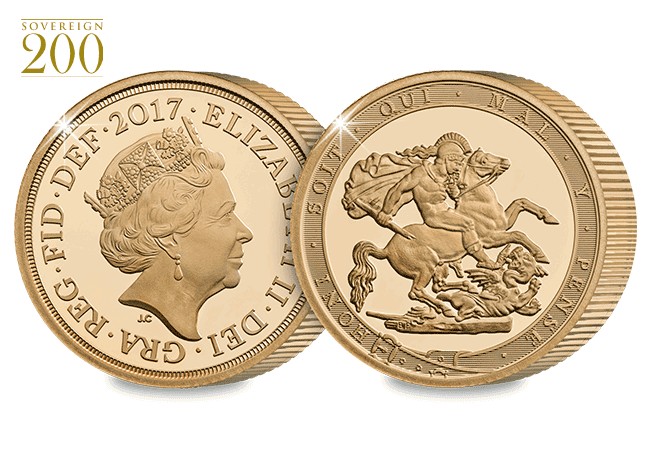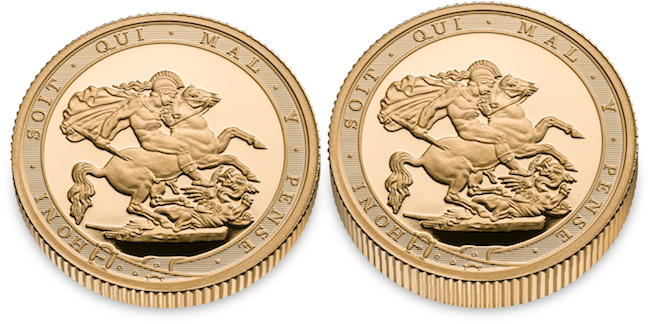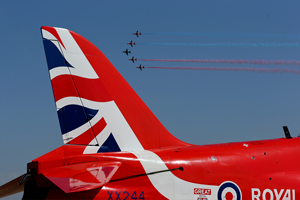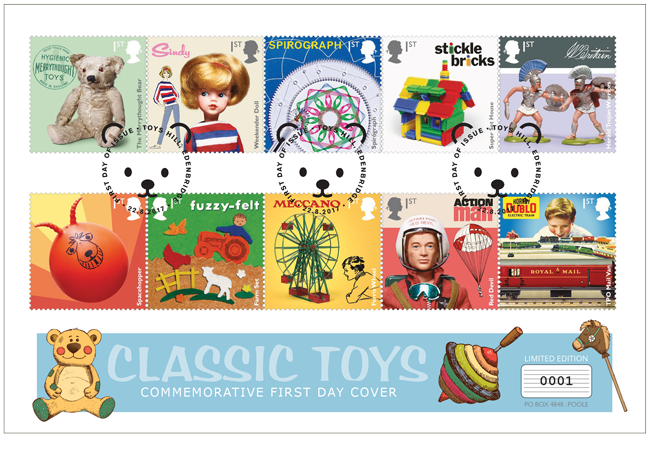200 years of the Sovereign. The UK’s First Ever Gold Proof Piedfort Sovereign.
Update, 27th June: It has now been confirmed that the Gold Proof Piedfort Sovereign has completely SOLD OUT at the Mint, in just 24 HOURS. It’s still available at The Westminster Collection, click here >>
2017 marks the bicentenary of the ‘modern’ Gold Sovereign – the most important numismatic anniversary for decades. To mark this occasion a number of special limited edition Gold Sovereigns have been released, including what might be the most important gold sovereign of them all – the first ever Gold Proof Piedfort Sovereign.

The Gold Sovereign is undoubtedly the United Kingdom’s most famous gold coin, and has been struck from 22 Carat Gold to the exact same specification since 1817.
To mark the 200th anniversary of the ‘modern’ Gold Sovereign, The Royal Mint has created a milestone in numismatic history by issuing the first ever Piedfort Sovereign.
Piedfort coins are some of the finest examples of British craftsmanship and the Gold Proof Piedfort Sovereign is no exception.
Prestigious reputation

You can really see the difference in thickness of the Piedfort when compared to the standard issue.
The very first Piedfort can be traced back to the 12th century. First minted in France, the name directly translates to ‘heavy measure’. The striking of Piedfort coins began later in England, however examples are known to date back to the reign of Edward I.
Piedforts were considered prestige pieces and ownership was often used as a means to signify a person’s wealth and power.

Today, Piedforts continue to be limited issues and striking of such pieces is reserved strictly for the most important events. Therefore, it seems fitting the UK’s first Piedfort Sovereign has been struck to mark 200 years of the Sovereign.
From today, for the first time ever, collectors will be able to own the Piedfort Gold Sovereign and with an edition limit of just 3,500, this new release is sure to be one that will be treasured in years to come.
You can now own the First Ever Gold Proof Piedfort Sovereign, but with such a tiny edition limit, they won’t be available for long. Sign up below if you’d like to be contacted about owning this UK first:
Remember the ‘Classic Toys’ of your childhood – vote for your favourite
This August Royal Mail will be releasing a brand new set of stamps which will undoubtedly prove popular with collectors young and old.
The stamp issue celebrates ten of the UK’s most iconic and beloved ‘Classic Toys’ from the last 100 years – from Meccano to Action Man.
And although this brand new issue will undoubtedly evoke strong feelings of nostalgia across generations, given the variety it certainly begs the question, which was your favourite?
Take a look at the stamps above and VOTE for your favourite on the poll at the bottom of the page
Here’s a little bit more about each of the stamps:
1)1st Class: Merrythought Bear
Merrythought is a toy manufacturing company established in 1930. Its most famous individual bear was arguably ‘Mr Whoppit’ which was based on the “Woppit” character from the Robin comic in 1956.
2) 1st Class: Sindy Doll (first appearance 1963)
Sindy was the best-selling toy in the UK in both 1968 and 1970. With her wholesome looks proving a big hit. Originally designed by Dennis Arkinstall for Pedigree Toys and Dolls, she was modelled on an adolescent girl, and new outfits were issued every six months.
3) 1st Class: Spirograph (first appearance 1965)
Spirograph employs complicated mathematical formulae to create hypotrochoids and epitrochoids, using ‘rotor’ and ‘stator’ pieces. This sounds much too complicated for a toy aimed at children, but the mathematics works unseen in the background – all a child has to do is stick a coloured pen through a hole in one of the Spirograph tools on a piece of paper, twirl it around a few times and watch a pattern emerge. Awarded ‘Toy of the Year’ by the British Association of Toy Retailers in 1967.
4) 1st Class: Stickle Bricks
Stickle Bricks are primarily intended for toddlers and were invented in 1969. An individual stickle brick is a colourful plastic shape which is a few centimetres long and which has a “brush” of small plastic “fingers” on one or more edges. The fingers of adjacent stickle bricks can interlock, allowing them to be joined in various ways.
5) 1st Class: W. Britain Toy Figures
The William Britain company originally produced lead soldiers but subsequently switched to plastic, acquiring a manufacturer of plastic soldiers, Herald, in 1959. The soldiers proved particularly popular in the 1970s, the key selling point being that they came ready-painted. US Cavalry, Greek warriors and cowboys and Indians were among the most popular characters.
6) 1st Class: Space Hopper
Although the origins of this concept are Italian, it was initially intended as an exercise device rather than as a toy and featured a wooden handle. The version we know and love was a British creation, from Mettoy who added the ribbed, antennae-like handles and the iconic kangaroo face, in 1969. The ‘Space Hopper’ name captured the imagination of children.
7) 1st Class: Fuzzy-Felt
Fuzzy-Felt was created in 1950 by Lois Allan and comprises a flocked backing board onto which a number of felt shapes – silhouettes or more detailed printed versions, it can be placed to create different pictures.
8) 1st Class: Meccano
Invented by Frank Hornby, this was originally marketed as ‘Mechanics Made Easy’ (1901), but the name was switched to the more familiar Meccano in 1907. Meccano retains the basic elements including the spacing on the perforations and the 5/32inch Whitworth thread on the screws, meaning that new Meccano sets can still incorporate old pieces. Meccano is one of the crown jewels of the British toy industry, although now French-owned, Meccano remains amongst the most collectable of British toy manufacturers.
9) 1st Class: Action Man
American toy firm Hasbro invented the concept of a doll that boys could play with – 1964’s GI Joe, with features based on decorated war veterans. The first dolls for the UK market appeared in 1966, initially named Action Soldier. Among the most popular are footballer kits and the Red Devil parachutist, Action Man was awarded ‘Toy of the Year’ by the British Association of Toy Retailers in 1966. A 2004 poll of the public to find Britain’s Favourite Toy placed Action Man at number 2.
10) 1st Class: Hornby Dublo
Frank Hornby first introduced the scale model train sets in 1920. Originally, sets were built on the ‘O-gauge’ scale (about twice the size of the current Hornby sets). Hornby’s genius was to switch to the OO-gauge (known as ‘Horny Dublo’) from 1938, which allowed for complex layouts to be built on a smaller budget and in a smaller space, taking into account the modest size of the average British living room. Hornby trains are able to appeal to many different character types across multiple generations.
Which was your favourite? VOTE NOW in our poll below:
If you’re interested…
Pre-order your ‘Classic Toys’ First Day Cover today
The ‘Classic Toys’ stamps are sure to be of interest to anyone who fondly remembers the iconic British toys explored in the Royal Mail issue.
You can reserve all of the new ‘Classic Toys’ stamps now on a limited edition First Day Cover.
Is being a Red Arrow just like being in Top Gun? Red 9 reveals all…
 Today, the Red Arrows have been granted Public Display Authority for the 2017 air display season and we can’t wait to see what they have in store for us this year!
Today, the Red Arrows have been granted Public Display Authority for the 2017 air display season and we can’t wait to see what they have in store for us this year!

Flight Lieutenant Emmet Cox (Red 9)
In the run up to the season we wanted to find out all things Red Arrows from the team themselves and Flight Lieutenant Emmet Cox, aka. Red 9, was only too happy to give us an exclusive interview. Currently in his third year on the team, Red 9, has told us how to become a Red Arrows pilot and what it’s really like to be part of the world renowned Red Arrows…
What qualities/skills does a Red Arrow pilot have that are different to a regular RAF fast jet pilot?
“The Red Arrows look for the same qualities as the Royal Air Force when first selecting their pilots; motivated, reliable individuals who are team players, trustworthy with good hand-eye coordination. All Red Arrows pilots have previously been fast jet pilots on the frontline and to be eligible for selection they require 1,500 hours of fast-jet flying experience, as well as being assessed as above average in their flying role. A good degree of self criticalness and the ability to think on your feet is essential.”
“it is definitely nothing like Top Gun”
Are there (in your opinion) any common misconceptions that come with being a Red Arrows air display pilot?
“Well it is definitely nothing like Top Gun, and it is far from glamorous at times. But we do have the opportunities to get involved with some terrific organisations and events that as a frontline fast jet pilot would never come your way. Another common assumption is that we rely on some piece of technology or autopilot to maintain the shapes we fly, but all that is used is a bit of hand and eye coordination and a lot of practice.”
Do you have any nicknames that you call each other (when not using each other’s numbers)?
“Yes, most of us have some sort of nickname, most have been picked up along the way through training in the RAF and our time on frontline Squadrons. Largely they are unimaginative, just put the letter Y on the end of anyone’s surname and you won’t be far off. There is definitely no one named Maverick, Hollywood or Goose!”
“the difference between a well flown and a poorly flown manoeuvre is tiny”

Red Arrows in action
Which is the most physically demanding or scariest part of the display to perform?
“For new team pilots, it is definitely the Rollbacks. This is the last manoeuvre learnt in winter training and is the most dynamic, the difference between a well flown and a poorly flown manoeuvre is tiny. As you progress in the team you move position and some of the manoeuvres flown in the second half of the show by the Synchro Pair and the rear part of the formation are very demanding and can involve high amounts of G forces.”
How many times do you perform the display during the year?
“It varies from year-to-year but about 80 shows is normal. In addition, we also do numerous flypasts while transiting from one location to another and some dedicated flypast sorties like that for Her Majesty The Queen’s Birthday celebrations or the rugby world cup final. Occasionally, after the UK season has finished, we conduct a tour further afield to places like the Middle East, Asia or the Americas to represent the country. This could make the total number of displays go well in to the hundreds.”

Hawk T1 jet
How long do you think the Hawk T1 will continue as your display aircraft and are there any plans towards its replacement?
“The Hawk T1 is in service with the Red Arrows for the foreseeable future. The Hawk T1’s nimble and manoeuvrable, yet forgiving, handling characteristics made it perfect in its original role of training new fast-jet pilots. These qualities, along with its high reliability, also make it great for our displays.”
“representing the very best of British values”
Why do you think the Red Arrows are so important as the face of the RAF and as a representative of the UK abroad?
“We take our role as ambassadors very seriously. The nature of what we do make us an effective soft diplomacy tool, both on the ground and in the air. We have a far reach and have the ability to effectively place the national flag overhead in any location all the while representing the very best of British values.”
As you can tell the Red Arrow pilots hold a lot of responsibility both as the face of the RAF and as ambassadors for the UK.
If you are interested…
Today you can be one of just 2,017 collectors to own the Official Red Arrows 2017 1oz Silver Proof Medal


